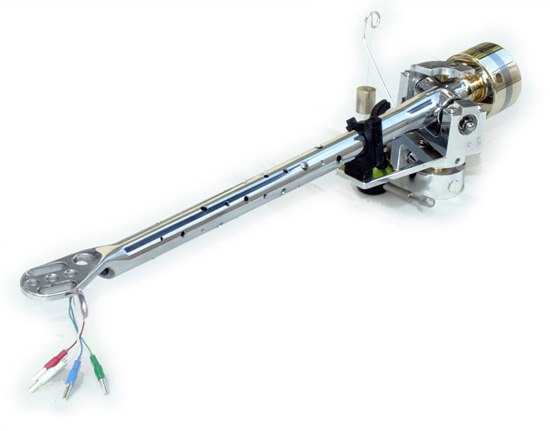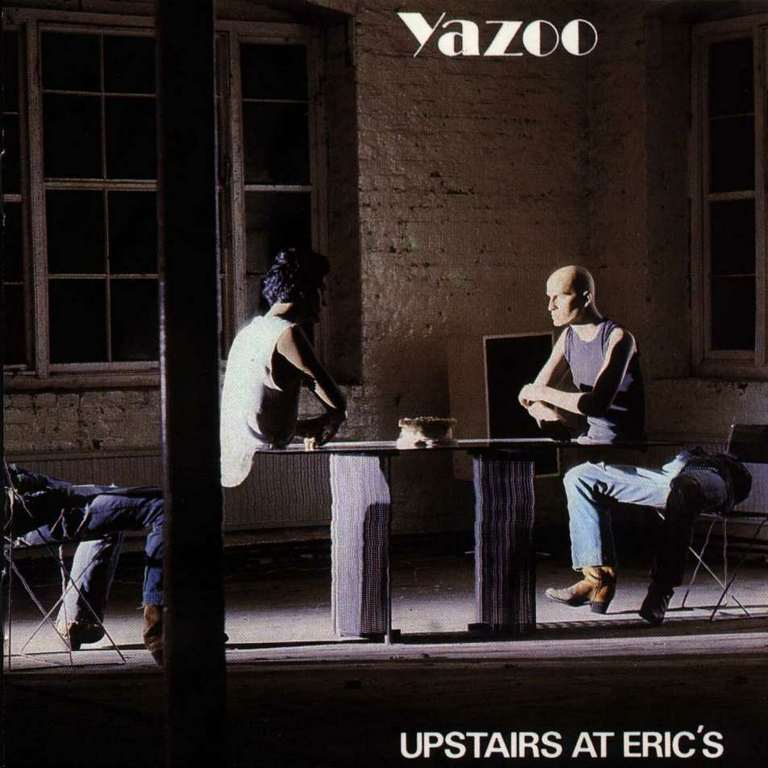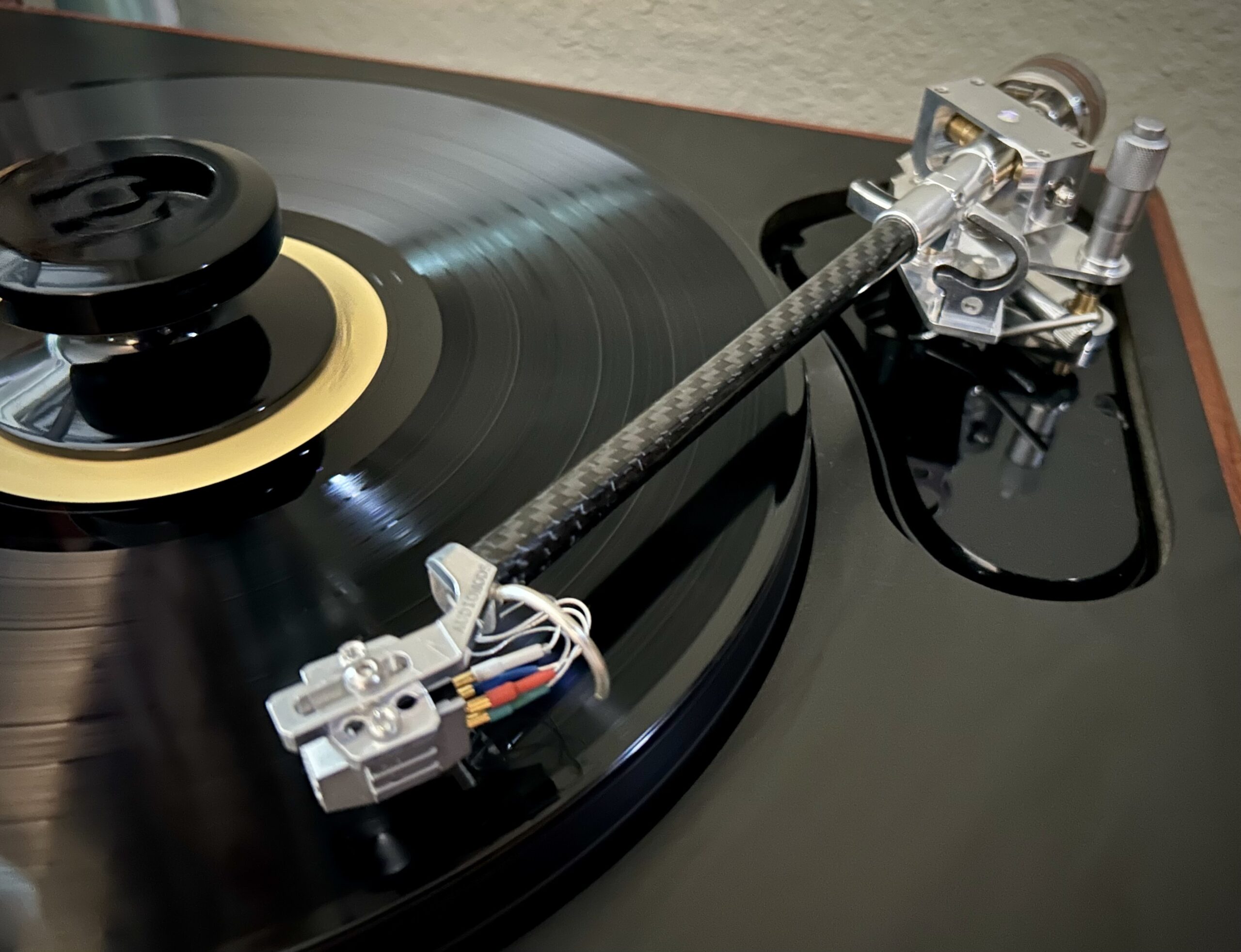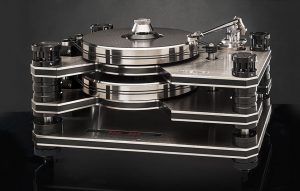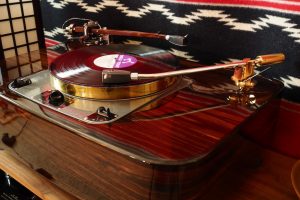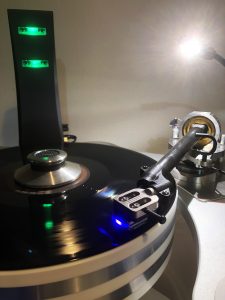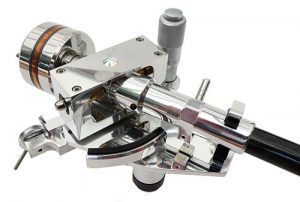We live during interesting times, at least as far as audio gear is concerned. The arena of cheap and cheerful hi-fi have seen unprecedented advancements of sound quality and have provided the frugal audiophile with a means to achieve a level of playback that was only reserved for the well-heeled hobbyists. For instance, manufacturers from East Asia now offer a wide array of moderately priced vacuum tube gear at prices that would be unthinkable twenty years ago. This phenomena extends beyond tube components, as advanced manufacturing techniques have led to the evolution of Tri-Path and Class D amplifiers that are capable of impressive sound quality, and can be often found for $500 or less. In some cases even below a $100. However, there is a flip side to this coin. The prices for high performance gear that are produced by the craftsman and artisans of the audio world has steadfastly advanced to levels that the average hobbyist can no longer hope to afford. This is especially true in the realm of analog gear, as turntables often break the $5000 barrier, moving coil cartridges can cost $3000-$4000, and tone arms can approach the price point of a decent vacation for two people. There is an undeniable need for audio equipment that is properly designed, manufactured by a company that cares about the fit and finish of the product, and offered at a price that is accessible to most members of our hobby. Can this really be done in today's world? Too often manufacturers delegate production to third party suppliers, and rely on glamorous cosmetics and slick marketing programs to generate interest for their latest offerings. Actually, Jeff Spall of Audiomods has accomplished the feat of producing a high performance tonearm that most of us can realistically obtain, rather than just dream of owning. The latest version of the Classic II tone arm is literally a tour de force, with design solutions achieved with high quality parts that are not found on arms that reside at this price point.
In 1983 Rega unveiled their new tonearm design with a one piece cast arm tube, and the world of affordable analog playback entered a new era. The RB 250 and 300 tonearms simply dominated the marketplace. As an unexpected consequence, Rega also created a platform which provided the jumping off point for a cottage industry of modifying the entry level Rega arms in order to coax a higher level of sound quality from them. The typical modification options consisted of installing an under slung counterweight and solid end stub, swapping out the stock wire with a higher grade of internal wiring, and perhaps fitting a collar for VTA adjustment. Jeff Spall's vision was far more ambitious, and led to a wholesale dismantling of the stock Rega arm, and modifying or replacing nearly every critical component on the arm. In reality, the Audiomods arm is essentially an original design that happens to use a modified Rega arm tube as one sub-component. Currently, the Audiomods product line consists of two tonearms, with the statement product being the Series 5 arm. While the newly released Classic II is the eminently affordable design that Jeff shoehorns in as many structural improvements that he can, and still keep the arm within the financial reach of the average hobbyist. The Classic II sells for £495, or depending on currency exchange, roughly $750 USD. Quite frankly, given the sheer number of improvements, and the undeniable quality of fit and finish this arm possesses, I do not see how Jeff can sell this arm for what he does. Let us start the review process by looking at a list of refinements that are incorporated in the Classic II, and you can decide for yourself if the asking price for the arm is as enticing as I think it is.
- The arm wand is sourced from the latest Rega 303 castings. In stock form, the arm wand is a solid bit of engineering. Yet the mechanical resonance signature of the arm wand can be improved by a combination of stiffening discs and a pattern of drilled holes in the arm wand. The discs are located at the 1/3 and 2/3 distances of the internal cavity of the arm tube and add considerable rigidity to the wand. The disc locations are chosen to deal with the nodal points of the harmonic resonance peaks of the arm tube. The drilled holes not only facilitate the installation of the stiffening discs, but also address the fundamental resonance point of the arm. They also help control standing waves within the arm, while having minimal effect on the stiffness of the arm tube. The stiffing discs add mass to the arm, while the drilled pattern of holes removes mass, with the net result being a minimal gain in overall mass.
- The horizontal bearing design is the same as the top of the line Series 5 arm. The bearings are high grade ceramic balls in steel journals. The yoke assembly is precision machined from a block of HE30 aluminum. Jeff has added a machined aluminum tone arm rest, and stainless steel VTA lock as standard features on the Classic II arm.
- The counterweight is a constrained layer design composed of brass, three layers of lead, and more brass or stainless steel. The individual plates are bolted together, and can be separated to achieve varying levels of overall mass. The design absorbs energy and dissipates it as heat rather than reflecting the energy back into the arm wand/yoke assembly.
- The anti-skate system is a variation of the weight on a string, which has been around since the early days of tone arm manufacturing. However Jeff has designed a nifty little plate that allows for ultra-precise and unvarying application of anti-skate force at any position during use.
- The wiring of the Classic II is a single run of Cardas 33 gauge tone arm wire, with Mitchell silver plated cartridge clips on one end, and Eichmann RCA connectors on the other.
Each arm is hand built by Jeff to customer specifications, so this means that it does take a few weeks to get one from Audiomods. Given the skill and care put into each arm, this seems to be the most minor level of inconvenience to obtain a product that is so precisely assembled. Once it is done, Jeff sends out the arm in a nicely built wood box that is lined with a soft fabric, and the arm is securely tucked away so that it can safely make the final trip to its new owner. It is remarkable to think you can get all of this hand crafted goodness for approximately $750 USD.
I decided to install the Classic II on a restored Thorens TD 124 MK I table. I have a few extra arm board squirreled away for it, and the 124 is a dynamic and expressive table that will showcase what the arm can do. During the initial stages of getting to know this arm I installed a ZYX 4D and a Transfiguration Audio Spirit MK III moving coil cartridges on the Classic II. I ended up preferring the Spirit MK III due to its effortless dynamics and even handed tonality. The phono stage is the Liberty Audio B2B-1, and I set the cartridge loading to 220 ohms. An Electra Print PVA preamplifier and 300B Custom amplifier drive a pair of Hawthorne Audio Trio speakers. Power conditioning duties are handled by an Audio Magic Mini-Reference, and all cabling are from the Zu Audio Mission series of wire.
The defining characteristic of the Classic II tone arm is the manner in which the arm conveys the purity of tone that defines both instruments and vocalists. There is a high degree of refinement to the music with this arm on the Thorens, and it is not equaled by entry level arms currently being produced. I have had the various offerings from Jelco through my system at different times, and a few well regarded vintage era arms, yet none of them could keep pace with this arm. For instance, on "There Is A Lull In My Life" [Let There Be Love; Dee Bell/Eddie Duran/Stan Getz Concord Jazz Inc CJ-206] the saxophone is remarkably expressive, with the burnished tone of metal, along with the lovely texture provided by the reed. Dee Bell's vocals are pure, honest, and unadorned with a manner that is refreshing in its honesty. This arm does not have an elevated presence, or a bunch of sonic artifacts that imprints itself into the essence of the music. The other accompanying instruments, piano, guitar, and maracas are also portrayed with an unadorned manner that is enticing to hear. Throughout this album every performer and instrument is evenly balanced with the proper texture and tone for each part. This combination of Thorens TD 124 and Transfiguration cartridge really comes together nicely with the addition of the Audiomods tonearm. The Classic II definitely pulls its weight when used an iconic table and well regarded cartridge.
Another aspect of the Audiomods tone arm that must be acknowledged is how well it sorts out complex musical passages, and maintains a stable image of the performers. On "Wildman" by Duke Ellington and Count Basie [First Time! The Count Meets The Duke; Columbia CS8518] the Classic II puts together a fabulous performance. The opening drum passage is accomplished with hand beats, and it is easy to recognize this unusual aspect, and the transition point of changing to drum sticks is also unmistakable. The muted trombone intro that follows is neatly defined, as is the band leader when he interjects a well-timed phrase or two. The flute and clarinet are also prominently placed in the front right hand side of the sound stage and the standup bass on the left hand side. As the song moves along, the horn sections of each band are easy to locate, and the interplay between them is just plain fun to hear. The woodwinds of both bands are placed up front, and are quite stable in relation to each other. The scale of two big bands on stage at the same time is titanic, yet all this massive energy of two bands never overwhelms this arm, and the sound is concise, refined, and natural in nearly every aspect. For a tone arm that is so eminently affordable, the Classic II performs at a level that no other modestly priced tone arm can equal. As a matter of fact, this arm more than likely will be at home with other associated analog gear that costs substantially more than what Jeff charges.
The Classic II also excels in terms of bass response. Bass passages are tight and fast, with no discernable overhang or bloating. The texture is understated and elegant, without any exaggerations or artifacts. Even synthesized bass lines have a natural feel, which is remarkable considering how much energy the record is channeling to the arm wand and bearing assembly. On "I Before E Except After C" by Yaz [Upstairs At Eric's; Sire Records 23737-1] the bass line is deep and extended, which deftly sets the underpinnings to this song. Yet there is a quick and light feel throughout as the synthesizer notes move up and down the scale. There is more to the music than just bass extension, and the Classic II shows this alternate side of the song. In the upper registers of the bass line, there are subtle details in the "instrument" programming, and this unique expression is easily heard with this table/cartridge/arm combination. Since the Classic II expertly handled the acoustic and electric bass passages on the previous jazz records, it makes sense that it can also find the subtle detail embedded in the bass line of this song.
Now the Audiomods tonearm receives high marks for its ability to present well recorded albums in a natural fashion. But one question I always ask about audio gear, is "Can this piece be fun to listen to?" The Thorens TD 124 is a turntable with plenty of drive and expression, and the Transfiguration Spirit III cartridge is no slouch in the fun category either. To answer this question, I put Dire Straits "Skateaway" [Making Movies, Warner Brothers WBSK3480] on the table. The overall sound is expressive, vibrant, and dynamic. The opening drum line has a cool and refined groove, while the organ is has layers and layers of shading to its sound. Knopfler's vocals are gritty and raspy, yet still remain remarkably expressive. The Classic II tonearm allows this table and cartridge combination to portray their inherent drive and punch, and in no way limits the performance of these fine components. It can be a difficult process to isolate the contribution of a tone arm to an analog system, but I can say that the Audiomods arm outpaces my Eminent Technology II linear tracking air bearing arm in terms of conveying the elusive "fun factor" of music to the listener. While I cannot mount my Riggle Engineering String Theory arm on the TD 124 without an extended arm board, I have completed enough comparative listening sessions to infer that the Classic II would come out on top in this comparison as well.
The Classic II tonearm has no meaningful weakness that I could detect, although in the end it is not on the equivalent footing of a highest tiers of super-arms. Certainly this should come as no surprise, although I suspect perspective owners will be quite pleased with the value they receive from their purchase. Perhaps one aspect I should mention is that Jeff offers an internal silver wire option for customers, and to a certain degree this does affect the manner in which the arm conveys tone and texture. The base price arm contains Cardas copper wire, and if paired with a warm cartridge, the combination has the possibility of being a bit of a snooze fest. But if a person chooses a cartridge that is a bit more energetic on the top end, then the Cardas is a wonderful choice. Even this point of discussion is about component synergy, how the shadings of an analog system are created, as well as a person's individual choices and tastes. If I had an Ortofon Cadenza Blue on this arm I would choose the Cardas option. Change the cartridge to a Grado wood body series, then I would strongly consider the silver wire option.
The Audiomods Classic II should be at the top of the list for anyone shopping for an affordable tonearm. I cannot think of a significant limitation to this arm given what it costs. I have listened to more expensive arms that are not as well built, and sound inferior to the Classic II. The overall fit and finish of the Audiomods arm is utterly remarkable. The engineering improvements that Jeff Spall has implemented in this design are first rate. Every aspect of the structural integrity is addressed, from the stiffening discs in the arm tube, to the constrained layer dampening recipe for the counterweight, the improved yoke and bearing assembly, and the ergonomically pleasing VTA adjustment knob. The polished finish to the arm is striking, and the lovely wood box with the padded inlay is completely unexpected for an affordable arm. Most manufacturers would consider cardboard and hard foam to be an adequate choice, but it is obvious that Jeff places a higher degree of value in his products and customers. If a person is searching for a quality tonearm under the $1000 mark, I would say that your best choice is going to be the Audiomods Classic II arm, as it stands head and shoulders above any other arm in this price range. I am going to need to speak with Jeff about purchasing this arm, as it has become my benchmark for a reasonably priced 9 inch arm.
Audiomods




